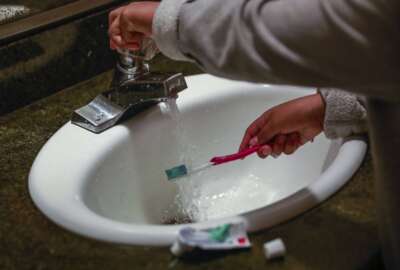

The Bipartisan Infrastructure Law includes the single largest investment of water infrastructure ever in federal government, and the EPA wants to get the funds out...
The Bipartisan Infrastructure Law includes the single largest investment of water infrastructure ever in federal government, with more than $50 billion going to Environmental Protection Agency programs. More than $20 billion is intended for safe drinking water programs, $15 billion is dedicated to replace lead pipes and $1.8 billion is to protect regional waters, according to the agency.
Karen Dettmer, managing director for Infrastructure Implementation at EPA, said it is also the first time the agency has dedicated funding for tackling emerging contaminants, through its State Revolving Funds (SRF) program. She said the majority of that $50 billion is going from the EPA to states first, and then to communities through the SRF.
However, as excited as EPA is about the potential to make improvements, Dettmer said it’s not enough to do all the water and wastewater work needed.
“And we’re grateful, and we’re so excited for that influx of money, but we need more money. We need more money on an annual basis for water infrastructure,” she said during a virtual talk hosted by the Bipartisan Policy Center on Tuesday. “It pales in comparison to the federal investment in road infrastructure, as an example. And we have reports, we have information, various estimates of some along the lines of $3 trillion that are needed for water infrastructure.”
EPA is concerned with getting the funds out appropriately. Many communities receiving first-year funds for lead line replacement will use the money to build up their inventories, and states will access year-two funds for actual replacements. EPA wants to build the program over time to show that the need is there and get more funding for water infrastructure on an annual basis, Dettmer said.
EPA is distributing the funds through existing programs it knows how to work within, but now the agency has additional priorities it wants states and communities to keep in mind when requesting money. These include equity, climate impacts and job creation; EPA is working with the Justice and Transportation Departments on the White House’s Justice40 initiative to ensure 40% of federal environmental investments flow to marginalized and underserved communities. To this end, EPA issued a memo in March to help recipients prioritize their projects, Dettmer said.
EPA is also leaning on the Labor Department to support workforce development for water jobs, as the environmental agency is less experienced with providing that kind of training or with labor unions. The law should help contractors build up their workforce for water infrastructure as well, Dettmer said.
“I also think the Bipartisan Infrastructure Law is going to be a huge game changer in signaling to communities and utilities, and most importantly contractors, that the funding is there,” she said. “This is five years of funding that contractors can count on. So they’re going to be less adverse and to build up their workforce when they know that they can count on that funding and contracts being put out for the next five years at least.”
At the same time, EPA has its own staffing needs to implement the law. The agency needs about 300 new hires, and getting those individuals up to speed so they can adequately assist states and communities will be a heavy lift, she acknowledged.
Part of that assistance means making more communities aware of the SRF for water infrastructure that perhaps were unaware of it before.
“So we’re doing direct technical assistance outreach to small and rural communities as well as disadvantaged communities,” Dettmer said. “We have a direct mandate from Congress in the Bipartisan Infrastructure Law to put 49% of the clean water and drinking water SRF funding, as well as 49% of the lead service line replacement funding, to disadvantaged communities.”
States set their own definitions of “disadvantaged” but the memo has guidance they can use to adjust or expand that definition for better utilization of funds. So far, Dettmer said they have seen 21 states change or contemplate changing their definitions for drinking water funding, a development she said made EPA “ecstatic.”
EPA has environmental finance centers for regional approaches but it is now adding national centers to provide assistance across all 50 states. In addition, to provide technical assistance, EPA is launching three pilot programs including the Closing America’s Wastewater Access Gap Community Initiative with the Agriculture Department. As Dettmer spoke, EPA Administrator Michael Regan and USDA Secretary Tom Vilsack announced the program on Tuesday, which will give 11 historically underserved communities in Alabama targeted technical assistance to pursue federal funding for wastewater needs.
Technical assistance is critical to the Bipartisan Infrastructure Law’s success at getting projects done and loans repaid to complete more work. Dettmer said some states are working against themselves by identifying other loan or grant funding that competes with the SRF program.
“I think there’s a lot of misinformation out there about how difficult it is to apply for one of these State Revolving Fund loans. And that’s why we want to get that technical assistance out to people, we want to make sure that they understand that there is assistance, there is help we can provide and the state,” Dettmer said. “Many states have technical assistance programs to provide that capacity to smaller rural communities to disadvantaged communities to prepare that loan application. So there are a lot of myths out there, too, that we need to push people on.”
Identifying and celebrating successes from that targeted technical assistance will make them easier to replicate and justify for larger Congressional appropriations later on.
Copyright © 2025 Federal News Network. All rights reserved. This website is not intended for users located within the European Economic Area.
Amelia Brust is a digital editor at Federal News Network.
Follow @abrustWFED


